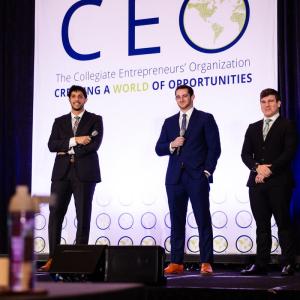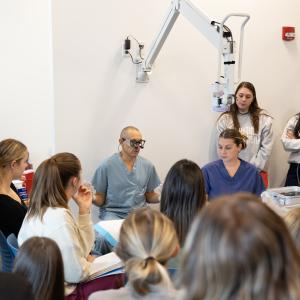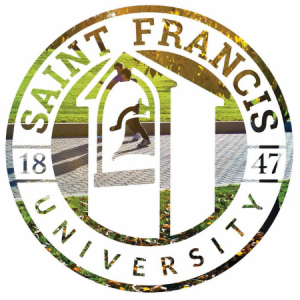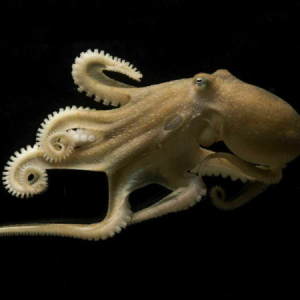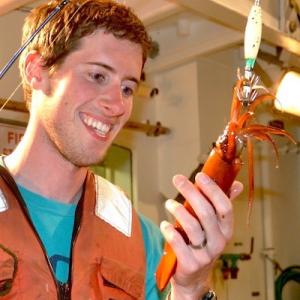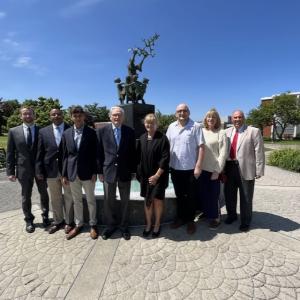Saint Francis University Team Sweeps Second Place in Global CEO Business Pitch for EcoPrint
Shields School of Business | 11/19/2024
Three Saint Francis University entrepreneurs took their non-profit company EcoPrint all the way to second place in the 41st annual Collegiate Entrepreneurs Organization (CEO) Global Conference and Pitch Fest on November 2, 2024, in Tampa, Fla. Biology-Pre-med students Caleb DeBass (Forest, VA), Carson Elbin (Needmore, PA), and Nathan Poplos (Magnolia, DE) pitched their business EcoPrint.
Hands-On: Applied Anatomy
Mitchell Jubas | 10/30/2024
Saint Francis University’s largest Interprofessional Gross Dissection Lab welcomed over 30 healthcare professionals and 50 students for an intensive cadaver workshop led by expert surgeons.
Saint Francis University Honors Dr. Wayne Takacs with First Named Academic Department
University Marketing & Communications | 06/04/2024
The Dr. Wayne and Elizabeth Takacs Biology Department is Saint Francis University’s first named academic department, made possible by a generous gift from the Takacs family.
Printing with a Purpose
Marie Young, University Communications & Marketing | 01/23/2024
An empty plastic Powerade bottle kicked off an unexpected journey for three Saint Francis University Biology/Pre-Medicine majors. Their quest for free filament to use in their personal 3-D printers has blossomed into something truly extraordinary.
Conservation genomics presentations free to public
Biology Department | 06/16/2023
The Dr. Wayne and Elizabeth Takacs Biology Department is hosting ConGen 2023, an international conservation genomics training workshop next week. Free evening presentations are open to the public on topics related to conservation biology and genetics/genomics.
Biology professor interviewed on NPR about octopus RNA research
University Communications & Marketing | 06/14/2023
SFU biology professor, Dr. Matthew Birk, is one of the scientists featured in an NPR interview that delves into an article in the journal Cell, where researchers report that octopuses can edit genetic information.
Biology professors examine differing impact of warming oceans on aquatic life
University Communications & Marketing | 10/18/2022
Not all marine animals react to changing ocean conditions in the same way, according to Dr. Matthew Birk, a biology professor at Saint Francis University and Brad Seibel, a biological oceanographer at the University of South Florida.
Program Naming Supports Pre-Med Students in Memory of Passionate Scientist and Scholar
Erin McCloskey | 07/11/2022
Saint Francis University and the Erevelles family jointly announce the naming of the Joseph Erevelles Biology Pre-Medicine Program. Through this named program, University students will be able to receive enhanced support as they pursue placement in medical, dental, optometry, veterinary, and related schools.
Induction Ceremony for Neuroscience Honor Society
10/08/2019
Saint Francis University held the inaugural induction ceremony for the recently established chapter of Nu Rho Psi , the national Neuroscience honor society. Nu Rho Psi is the only nationally-recognized honor society in the area of brain research. The inducted students and faculty were invited to become members based on their interest and commitment to the interdisciplinary study of Neuroscience. The students were nominated based on their high scholastic achievement and their potential to excel as future neuroscientists. The Saint Francis chapter application received unanimous approval by the
Students Participate in Domestic Dental Mission Trip
06/09/2019
Dr. Justin Merry , Associate Professor of Biology , Ms. Jen Merry, Assistant Director of Marketing Strategy, and Dr. Tim Bintrim , Professor of English and Environmental Studies , led a delegation of ten student volunteers to MOM-n-PA , the Pennsylvania Dental Mission of Mercy, held at Mohegan Sun Arena in Wilkes-Barre June 7-8, 2019. Now in its eighth year, MOM-n-PA is a huge event that serves roughly 1,800 people over two days, each year delivering a million dollars in free dental services to the under-served. Almost all patients either lack dental insurance or are under-insured, and many
